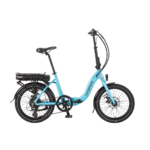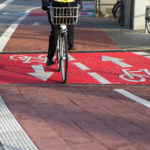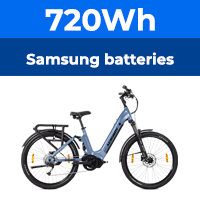300W Flecc, that is massive, congratulations!I'm sure that is true, my own similar tests in my seventies using a Panasonic system on a 14% hill showed that for very short bursts of a few seconds I could exceed 300 watts, but that quickly collapsed when attempting to sustain it. My comfortable sustained power was nearer a third of that.
Redbridge Testing - Hubs v Cranks
- Thread starter 10mph
- Start date
Not that special David, we are all capable of a momentary output way over what we can sustain. Top Tour de France riders like Indurain and Armstrong could sustain 300 watts continuously and over 400 watts for up to an hour, but are capable of very short bursts of over 1000 watts.
So whatever we can output routinely can be more than tripled for a few seconds, though this isn't advisable for anyone with heart problems of course.
So whatever we can output routinely can be more than tripled for a few seconds, though this isn't advisable for anyone with heart problems of course.
Made mental note of that!So whatever we can output routinely can be more than tripled for a few seconds, though this isn't advisable for anyone with heart problems of course.
Indalo
It seems superb to me, I'm still impressed. My heart would certainly give up!Not that special David, we are all capable of a momentary output way over what we can sustain. Top Tour de France riders like Indurain and Armstrong could sustain 300 watts continuously and over 400 watts for up to an hour, but are capable of very short bursts of over 1000 watts.
So whatever we can output routinely can be more than tripled for a few seconds, though this isn't advisable for anyone with heart problems of course.
Which is what I more or less said up thread, approx 350w depending on losses and motor efficiency. I took this as 25w and 65%....68% matches your figures...also before fully reading your post I estimated rider input at approx 200w so more or less correct againIn my post yesterday evening I wrote
I should have said 564 Watts is the power reaching the road from the combined power of the motor and my own legs which were pedalling hard on the hill. I only realised this bad mistake reading it over before bed last night.
Measuring or estimating the rider input is a major problem. For measuring motor power, it would have been much more informative to have done additional hill climbs under throttle only for those bikes such as the Wisper which can be driven solely with the throttle with the pedals stationary or tuning lightly without force.
On the Redbridge test day I was preoccupied with comparing hill climbing performance of a range of bikes with my Kalkhoff which uses the Panasonic motor control system based on a proportional torque sensor. The motor output is governed by the rider torque and you can't get any motor output without providing some of your own pedal power. I attempted a fair comparison with my Kalkhoff, but I should have done additional circuits with throttle only to provide exact data on the hill climbing power of the motor alone.
Can we have another Redbridge test day - or an event on a similar hill course where we can do an improved set of tests?
I can make a rough estimate of my rider pedalling power on the steep section of the hill as follows:
My first ride of the hill was with my Kalkhoff Agattu in maximum assist and it took 10s to climb 5m as shown in the diagram in my first post. The corresponds to 564 Watts motor + rider into the road.
My second hill ride was with my Kalkhoff Agattu in minimum assist. I have just checked my GPS track - I took exactly 20 seconds for the same 5m climb. so that is a total power into the road of 282 Watts.
In minimum assist Kalkhoff Panasonic (2010/11 model) is said to provide a motor power of 50% of the rider power. This would make the rider power 188 Watts and motor power 94 Watts in order to give 282 Watts total.
In maximum assist Kalkhoff Panasonic (2010/11 model) is said to provide a motor power of 200% of the rider power. This would make the rider power 188 watts and motor power 376 watts in order to give 564 Watts total.
188 watts from me is rather more than I can provide into an unassisted bike over two or three minutes on a long steep hill. However the steep part of Redbridge hill was very short -only around 48 m long for the 5m rise. So I think I might reasonably be expected to be capable of a 10 to 20 s burst of 188 Watts.
My revised conclusion is that all the bike motors except the one which was slower are capable of providing about 376 Watts into the road on a 10.5% hill.
Last edited:
This is such a useful piece of information. Thank you.My experience of owning both is that there's little difference with gradients at around 10%. Below 10% the hub motor bikes mostly tend to be a bit faster climbing, but once gradients get to 14% or more, crank drive through the gears starts to come into it's own, the exact point depending on the rider capabilities of course.
Related Articles
-
 MTF Enterprises announces acquisition of EMU Electric Bikes
MTF Enterprises announces acquisition of EMU Electric Bikes- Started by: Pedelecs
-
 Wisper 806T folding bike wins Which? ‘Best Buy’
Wisper 806T folding bike wins Which? ‘Best Buy’- Started by: Pedelecs
-
 Sustrans calls for protected cycle lanes
Sustrans calls for protected cycle lanes- Started by: Pedelecs
-
 Amazon launch their first UK e-cargo micromobility hub
Amazon launch their first UK e-cargo micromobility hub- Started by: Pedelecs



